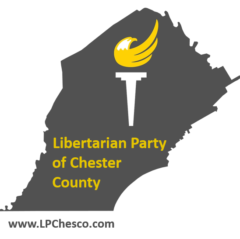
Of all the challenges facing Chester County this past year, few pandemic-related questions have been as contentious as the reopening of our schools. On the one side are the medical authorities, parents and students, and lined up on the other side is the teacher’s union. Reopening schools has been fought by unions across the country. No major paper has gone long without a photo of some teacher posing with handmade signs, fists in the air. Even when obviously alone, they make sure to be photographed wearing a mask.
No one wants a teacher to be put at serious risk of illness, and thankfully we now have the knowledge and tools to ensure a safe return to in-person schooling for most students and instructors. Yet even when offered free vaccinations, some teaching groups have refused to return to schools, even when their municipality and school boards require it. Every time a concession is made by communities, yet a new excuse or demand seems to appear from the unions. Clearly, the unions forget that teachers work for the community, not for a union.
How, in the face of mounting contrary evidence can some of these unions manage to prevent kids from resuming their critically needed education? The answer lies in the economics of the situation. A key market lesson is that when monopolies exist, service declines and costs increase. This is true for gasoline, hamburger, and housing. It is also true for schooling.
Public school unions have reached the point of entitlement. With a perceived monopoly on teaching positions, they are unconcerned about wielding power that runs against the interests of the communities they were hired to serve. With millions of dollars in dues and donations, they generate disinformation in order to win public sympathy. Since their power resides in a monopoly, the main goal needs to be the elimination of competition.
The unions begin by generating the myth that public schools “fund” private schools or charters. Somehow, constituent tax dollars do not below to students and parents but belong to the schools where they happen to work. But in reality, funds belong to the people being educated, who could spend those dollars at charters, for example, rather than at a public school. The unions attempt to paint their competitors as less effective than they are, but the national numbers indicate otherwise. Yet even if they did not, why are do so many charters have waiting lists of student admissions? The answer is obvious to everyone, including the unions. New York City alone has a charter school wait list of over 50,000 students, according to the Wall Street Journal.
One of our greatest thinkers, Thomas Sowell, has pointed out that fighting charter schools is tantamount to fight Black success. He has pointed out that in NYC charters are populated primarily by black and Hispanic students who outperform their public-school counterparts in both Math and English. Stealing funding from these schools is to reduce the chances of minority student success.
Poor virtual teaching results have forced many parents to turn to home schooling. In Connecticut, for example, the number of home-schooled students has jumped fivefold, with impressive increases around the county. Many of these families will undoubtably keep teaching at home, based on good quality results. Catholic Schools have largely remained open while public schools were shuttered. “What we said when we opened is we would follow the science,” explained Thomas W. Carroll, superintendent of schools for the Roman Catholic Archdiocese of Boston. “As long as it was safe, we would keep the schools open.” The result was an influx of 4,000 new students in Boston alone.
In Chester County St. Agnes in West Chester reopened in August 2020. This was followed by over 100 local Catholic schools across 5 counties. As of March 4th, only a single case of virus transmission has been traced to an archdiocese school.
This is not to say that Chester County does not have serious problems with their schools. As Kristen Bishop, superintendent of Avon Grove Charter School has pointed out, over 30% of every dollar of Pennsylvania school funding now goes towards mandated pension costs. This is an absurd, unsustainable financial situation. Pennsylvania schools are also harmed by the poorly designed funding system commonly called “Hold Harmless”.
This insane system mandates that no school district may receive less funding than it did the previous year no matter what happens to the student population. A report by Public Citizens for Children and Youth demonstrates that five school districts, including Pottstown and Norristown, have lost one fifth of their student base since 1992, yet receive more funding every year. They estimate that almost $600 million goes to instruct students that do not exist.
Clearly, Pennsylvania has serious problem in funding education, and the poor quality of our leadership and legislators gives us little hope of correcting the financial problems any time soon. But we can make our local teacher organizations more responsive. Some great things are being accomplished by parents’ organizations. But the biggest tool that the public has at our disposal is simple competition.
The teacher’s union Pennsylvania State Education Association reportedly spends over a million dollars a year to influence political races. Governor Wolf has collected $2.4 million from teachers’ unions according to the Washington Examiner. Against this tide of money and entitlement is the ability for parents and students to choose their schools. By choosing charters or other alternatives to public schools, the power of the PSEA is reduced.
The Pennsylvania senate is considering a bill entitled Excellence in Education. It is designed to allow families to retain the tax dollars that rightfully belong to them. These dollars would be used for educational expenses including tutoring or private school tuition. The state teachers’ unions are understandably terrified at the prospect of increased competition for our tax dollars. What, they may ask, can they possibly do to gain the confidence of parents who they have fought against for so long?
They might start by allowing teachers to do their jobs and teach students in classrooms, just like their competition, charters and religious schools have. They might also stop pretending that education dollars already belong to them, when they actually belong to the parents that hire them. Also, the majority of dedicated, hard-working teachers can listen a little less to the small group of power hungry leadership and a bit more to the needs of the students that they have pledged their careers to support.
